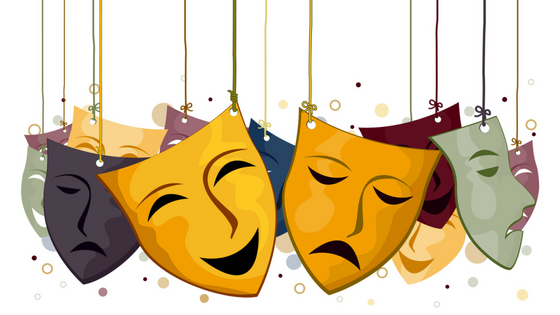In part 3 of this series, we examined the character depth spectrum, which has well-rounded characters on one end and flat characters on the other.
For an interesting example of how flat and well-rounded characters can both be used effectively, in this article we are going to look at two hugely popular young adult action franchises: Twilight and The Hunger Games.
In a number of ways, both series are extremely similar; however, The Hunger Games is fairly well regarded critically, while Twilight is, for the most part, critically disdained. For example, The Hunger Games rating on Goodreads is 4.35 stars while Twilight’s is 3.57 stars. And not that film adaptations should be conflated with book editions, it’s worth nothing that The Hunger Games has an 84% positive rating on the review aggregator site Rotten Tomatoes, while Twilight has a 48% positive rating.
I would argue that Twilight is looked down upon largely because it is dealing in archetypes.
I would also argue that’s exactly why it’s so massively popular.
As we have discussed previously in this series, readers often enjoy one-dimensional and archetypical characters. Bella Swan’s primary focus throughout the Twilight series is choosing a boyfriend/husband . . . and that’s okay! Edward (her vampire lover – another archetype) is always going to be the cold, distant, good boy who is handsome and regal. Jacob (her werewolf paramour – yet another archetype) is always going to be the warm, feral, bad boy. These character are not going to change, and their actions are going to be largely predictably. Fans of Twilight enjoy the books for that exact reason.
In fact, these archetypes of the “good boy” and “bad boy” whom a female protagonist must choose between are part of the key conventions of the romance genre. Buffy must choose between Angel (good) and Spike (bad). Bridgette Jones must choose between Mark (good) and Daniel (bad).
The story about the princess who needs to be rescued by the prince has been told and enjoyed for hundreds of years, and while our intellectually critical selves may deem these sorts of tales as “lesser art”, a great many people continue be drawn to them. Young people in particular seem to resonate with stories featuring archetypes, and young people are, of course, the target audience of Twilight.
The Hunger Games has similar story elements as Twilight in that it tells the tale of a teenage girl, Katniss Everdeen, must choose between two love interests, Peta and Gale. Katniss, however, is much more like Hamlet than she is like Bella. Sometimes Katniss is heroic and sometimes she’s fearful, sometimes she’s confident and sometimes she’s scared.
Her love interest Peta, unlike Edward or Jacob from Twilight, is weak and cowardly, yet his intelligence comes through in a pinch. Katniss mentor, Haymitch, should be training her for the games, but is instead a dismissive alcoholic. Stylist Effie works for the evil capital, but is ultimately a friend of Katniss.
Simply put, the characters in The Hunger Games are much more layered, nuanced, and unpredictable than the characters of Twilight.
Why this nuance translates to critical acclaim is a bit of a mystery to me . . .
Comedies, fantasy adventures, and superhero films rarely win the Academy Award for best picture, and the types of stories that deal in archetypes are often looked down upon. This is, perhaps, because they appeal to our youthful nature and as we get older and wiser we see the world isn’t black in white, but rather full of grays and contradictions, and, as such, we prefer those contradictions in our art as adults. The world is extremely complex and so we, arguably, want our characters to be complex as well. That’s my best guess, but, as I’ve said in the past, I am a fan of both archetypes (Superman) and complex (Mrs. Dalloway) characters.
Despite their differing approach to character development, The Hunger Games and Twilight are both great examples of how flat and well-rounded characters can used in a way that satisfies thousands of readers.
Whether you are going to use well-rounded characters and archetypes in your novel is a decision you will need to make consciously, and, as with most things in fiction, it will depend largely on your genre and target audience.
In part 5, the final part of this series, we’ll explore the role supporting and minor characters play and how you can develop these characters effectively.
Enjoy this Article? Get My FREE 4-Part Online Course for Authors
Discover the author mindset sucess formula today. Insert your name and email below for instant access.
I value your privacy and would never spam you






